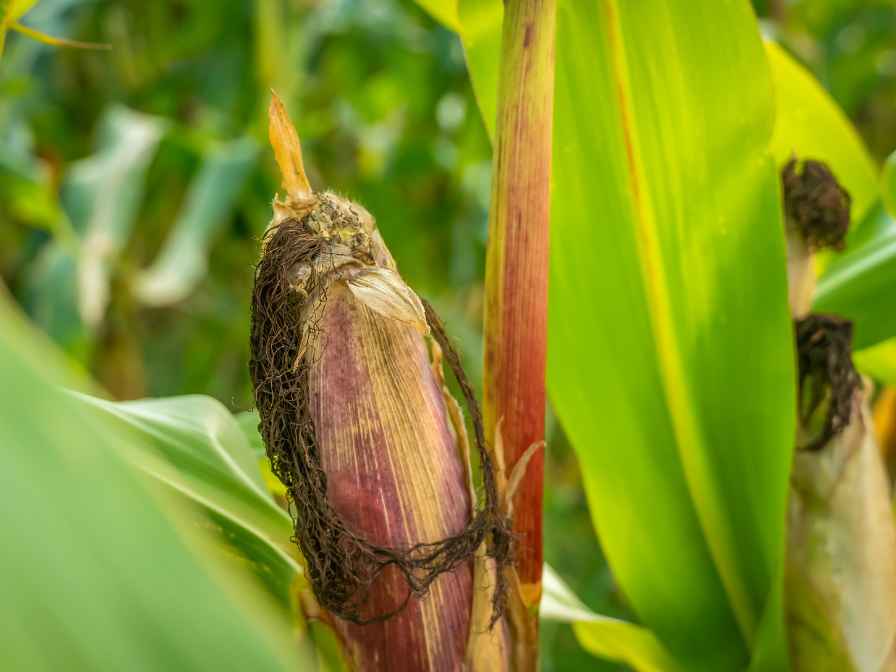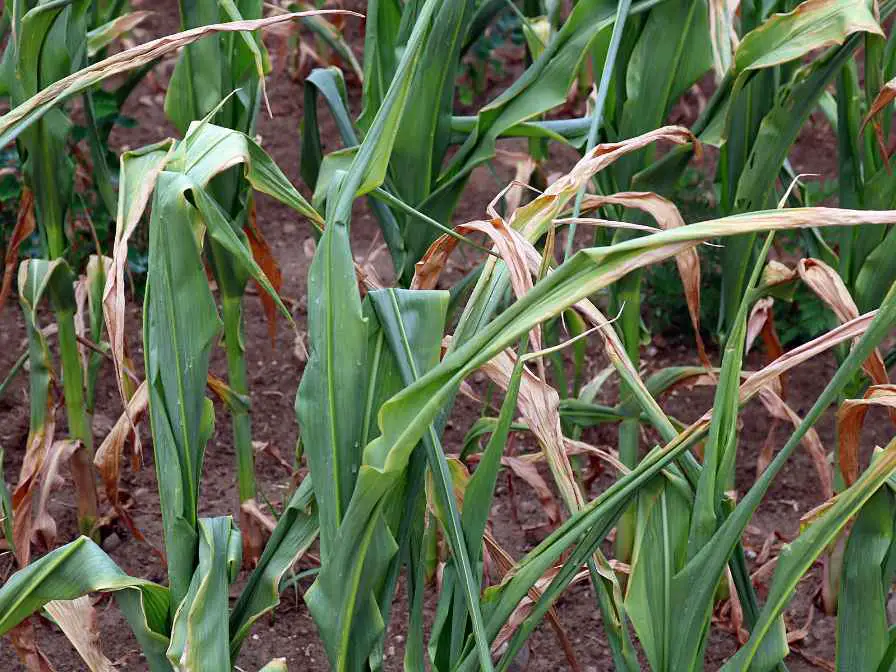When having a decorating and flowering plant like a corn plant people are usually concerned about its care. It is because they usually end up losing the plant. The main faced by gardeners is the death of corn plants. they often wonder how to save dying corn plants. well, we are going to tell you that.

Corn Plant
The corn plant, also known as Dracaena fragrans, is a famous indoor plant that is prized for its ornamental value. It is a member of the Dracaena family and is native to tropical regions of Africa. The plant is also sometimes called the cornstalk plant, due to the shape of its long, narrow leaves that resemble those of corn plants.
The corn plant is a slow-growing plant that can reach a height of up to 6 feet indoors, although it can grow much taller in its natural habitat. It has long, sword-shaped leaves that can be up to 2 feet long and are a deep green color.
The leaves grow in a spiral pattern around the stem of the plant, giving it a distinctive appearance. The plant is also known for its fragrant white flowers that bloom in clusters at the tips of the stems. The corn plant is a relatively low-maintenance plant that is well-suited to indoor growing conditions.
It enjoys bright, indirect light, and watering should only be done when the soil feels completely dry. Overwatering can cause the roots of the plant to rot, so it is important to ensure that the soil has good drainage. The plant can also benefit from occasional fertilization with a balanced fertilizer. With proper care, the corn plant can be a long-lived and attractive addition to any indoor space.
Benefits of Planting Corn Plant
Planting a corn plant, or Dracaena fragrans, can offer several benefits, both aesthetic and practical. Here we are going to discuss some of the important ones as follows:
Air Purification
The corn plant is known for its air-purifying properties. It can assist in eradicating harmful pollutants such as formaldehyde, benzene, and trichloroethylene from the air, making it a great addition to any indoor space.
Low Maintenance
Corn plants are relatively low maintenance and can thrive in a variety of growing conditions. They require only moderate watering and indirect light. It makes them the best plant choice for people who have little time or who are new to plantation or gardening.
Aesthetic Appeal
The corn plant’s long, narrow leaves and spiral growth pattern can add a touch of tropical elegance to any indoor space. They are a popular choice for office environments, hotels, and homes, and can be used to create a calming and relaxing atmosphere.
Health Benefits
Studies have shown that indoor plants can have a good and positive effect on anxiety reduction, mental health, and reducing stress. The presence of a corn plant in a room can help to create a soothing and tranquil environment that promotes relaxation and well-being.
Sustainable Décor
By choosing to decorate with a corn plant, you are choosing a sustainable option that has a lower carbon footprint than many other decorative items. Plants are a renewable resource that can help to reduce the amount of waste that is generated by other decor items.
Reasons for Dying Corn Plant
Before jumping to save the corn plant, you better know why the corn plant is dying. Corn plants, or Dracaena fragrans, are relatively hardy and can tolerate a range of growing conditions. However, there are several reasons why a corn plant may die, including:
Overwatering
Corn plants prefer to be kept on the drier side, and overwatering can cause the roots to become waterlogged and rot. If the leaves of the plant are turning yellow or brown and the soil is consistently wet, it may be a sign of overwatering.
Under watering
While corn plants prefer drier soil, they still require regular watering. If the soil becomes too dry, the leaves may begin to wilt and the plant may eventually die. So try to provide adequate required water to the corn plant.
Lack of light
Corn plants prefer bright, indirect light and may struggle in areas with low light levels. If the plant is not receiving enough light, its growth may be stunted, and its leaves may turn yellow or brown.
Pests & diseases
Like all plants, corn plants can be susceptible to pests such as spider mites and mealybugs. If left untreated, these pests can damage the plant and cause it to die. Also, some diseases might cause corn plan to die.
Temperature Extremes
Corn plants prefer temperatures between 60-80°F and may struggle in areas with extreme temperatures. Cold drafts or exposure to hot, direct sunlight can both cause damage to the plant.
Overall, the key to keeping a corn plant healthy is to provide it with the right growing conditions, including moderate watering, bright, indirect light, and a consistent temperature. By avoiding overwatering, providing adequate light, and monitoring for pests, you can help ensure the long-term health of your plant.
How to Save Dying Corn Plant

If you have a dying corn plant, there are several steps you can take to try to save it. Here are some methods that may help:
Adjust watering
Check the soil moisture level and adjust watering as necessary. If the soil is too wet, allow it to dry out before watering again. If the soil is too dry, give the plant a good drink of water, making sure to soak the soil thoroughly.
Increase humidity
Corn plants prefer a humid environment, so increasing the humidity around the plant can help it recover. You can mist the leaves with water, place a humidifier nearby, or group the plant with other plants to increase humidity.
Prune dead or damaged leaves
Removing dead or damaged leaves can help the plant redirect its energy to healthy growth. Use clean, sharp scissors to snip off any leaves that are yellowing or brown. This will provide space for air circulation and also pests with dead leaves will be gone.
Fertilize
If the plant is not getting enough nutrients, fertilizing it may help it recover. Use a balanced, water-soluble fertilizer and follow the package instructions for application. Don’t over-fertilize. It can also cause plants to die.
Re-pot
If the plant is root-bound or the soil is depleted, repotting it in fresh soil may help it recover. Choose a pot that is slightly larger than the current one and use a well-draining soil mix. It is a very common method used to save the dying corn plant.
Check for pests & diseases
If the plant is infested with pests such as spider mites or mealybugs, treating it with insecticidal soap or oil can help eliminate the pests and save the plant. if there are signs of any disease use the remedy after consulting with a local horticulturist by observing the symptoms.
In a nutshell, the corn plant is a great addition to the garden whether it is available in outdoor or indoor settings. Just make sure you take adequate care of it. Otherwise, your corn plant might start dying, for which there are methods available to save it. Most common of these is repotting.
FAQs
How do I get my dying corn plant back?
There are several methods available that you can try to save your corn plant from dying. It depends on which stage of death the plant is at. You can make the watering schedule, re-pot it, get rid of rotten roots, get rid of rotten leaves and stems, and take remedial actions for pests and diseases.
Why are the leaves on my corn plant are dying?
Well, besides having an attack of pests or some type of disease the most common reason for dying corn plant leaves is the inconsistent watering schedule. You might sometimes provide a lot of water and sometimes keep it dry for a longer period. Make sure you provide adequate water consistently.
Should you cut dead leaves off corn plants?
Yes, you should. It is important to save plants from dying and saving it from further pests and diseases. Use sharp scissors and make sure you get rid of these dead leaves timely off your corn plant.

